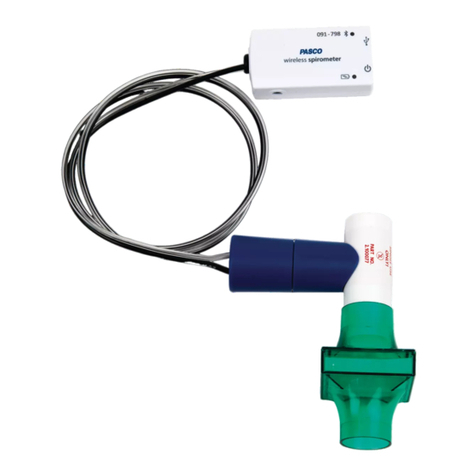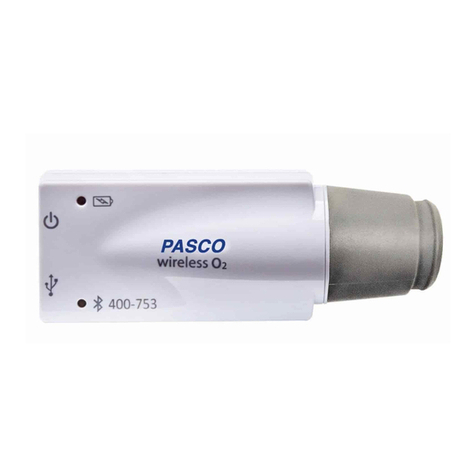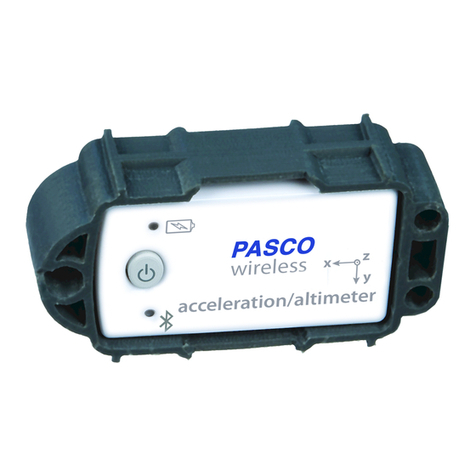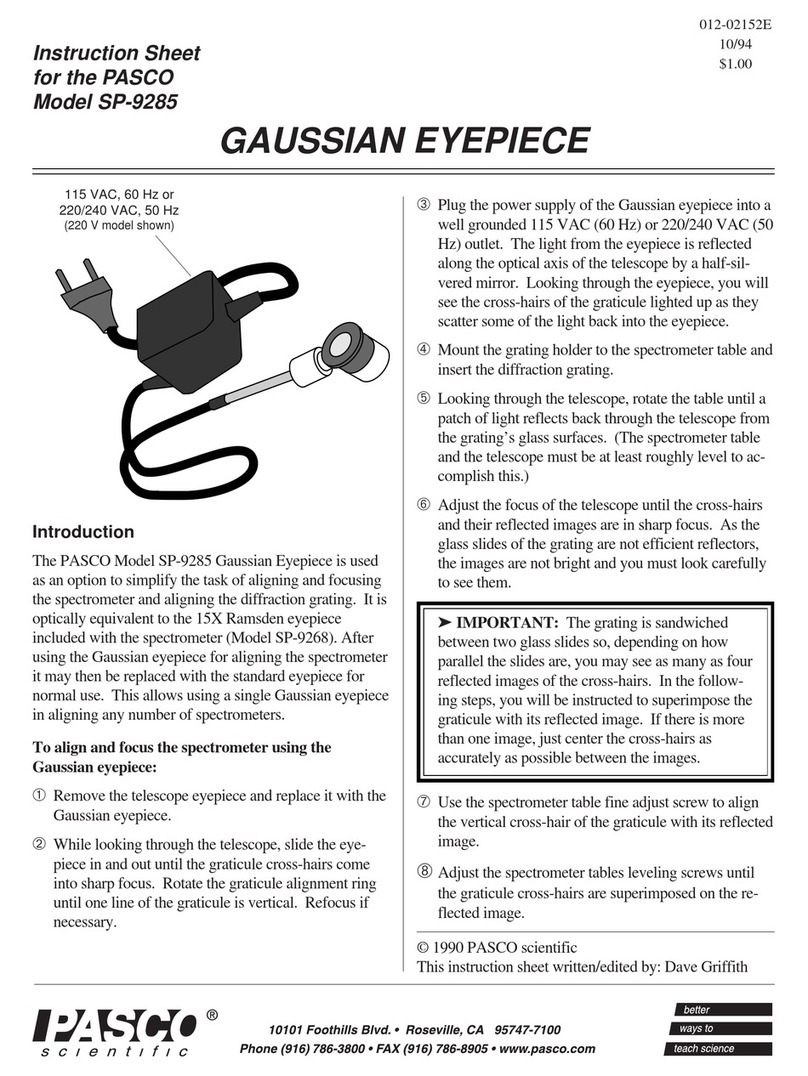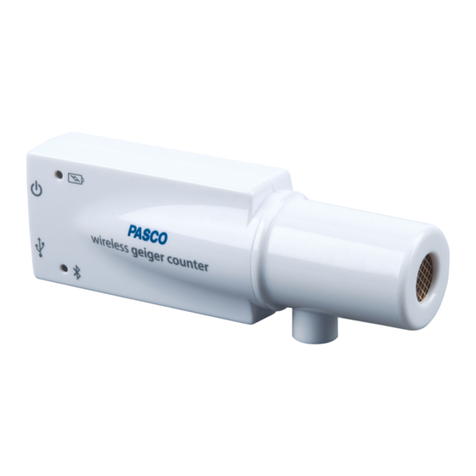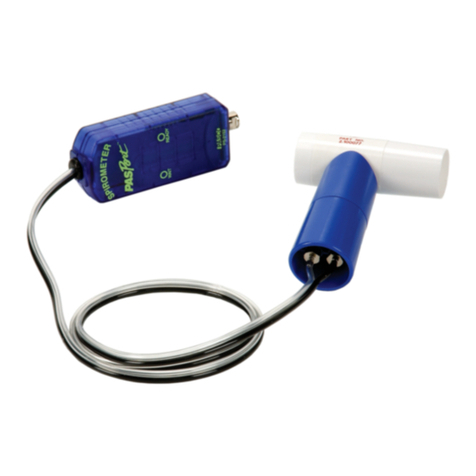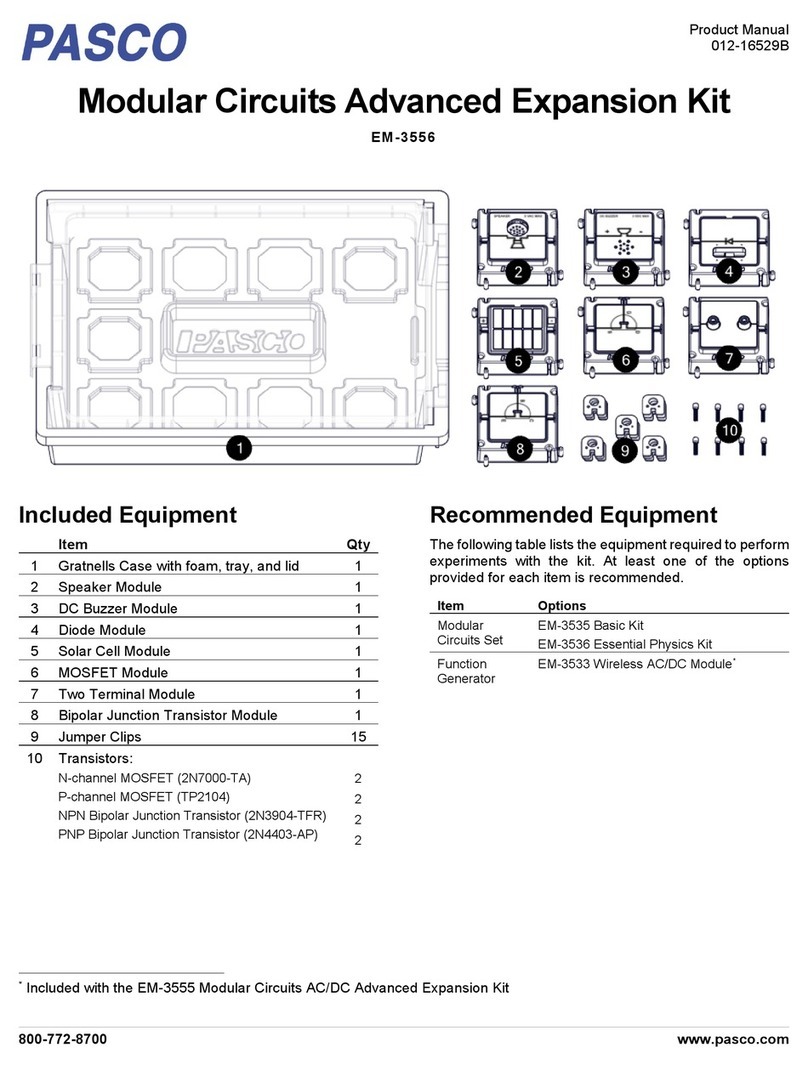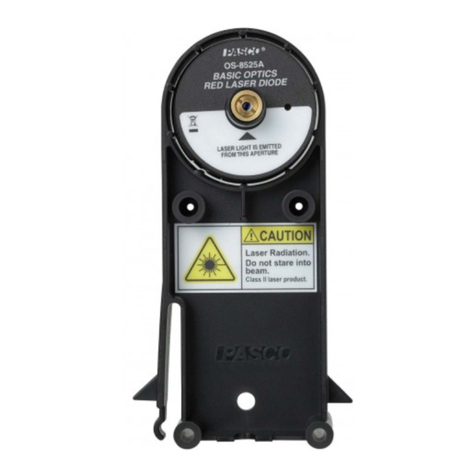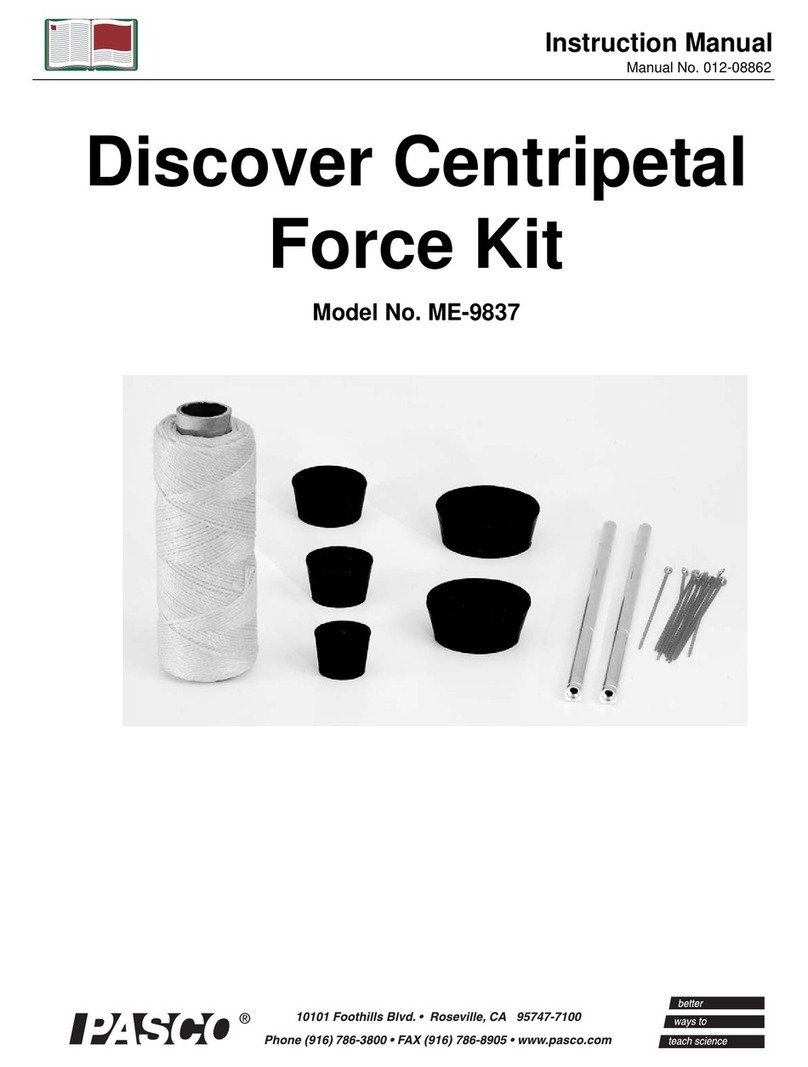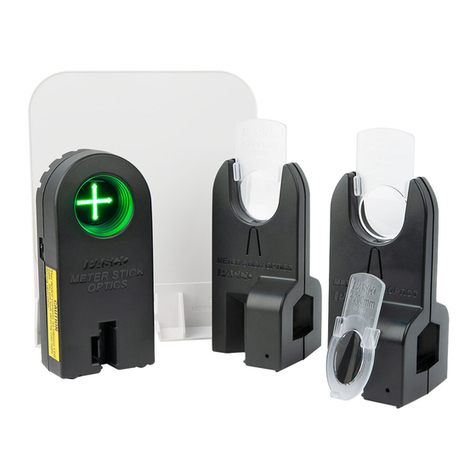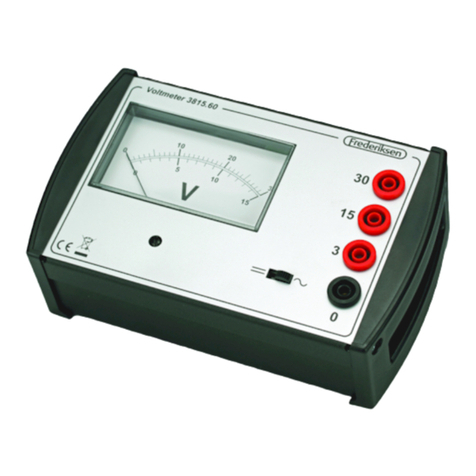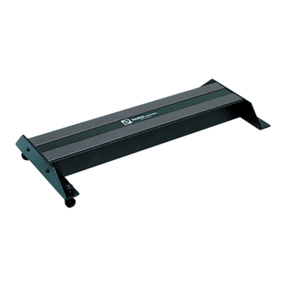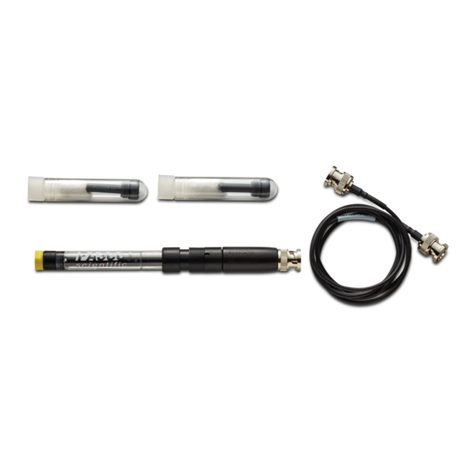
ES-9078A 012-12856A Measuring Current
5
The electrometer can be thought of as an infinite impedance voltmeter in parallel
with a capacitor, CE, as shown in Figure 4. CErepresents the internal capacitance
of the electrometer, plus the capacitance of the leads and the capacitance of the
Ice Pail, if being used.
When a charged object is placed across the electrometer leads (or in the ice pail),
a voltage Vdisplays on the meter. If the value CEis known, the value of the
charge can be calculated as Q = CEV.
The capacitance of the electrometer alone is around 27 picofarads
(pF). However, if the sampled object adds significant capacitance,
the situation becomes as shown in Figure 5.
To accurately calculate the amount of charge, total capacitance CE
+ Cext must be determined. In any case, for quantitative measure-
ments of charge, you need to have an accurate value for CE(Cext
>>CE), unless you are certain that the object you are measuring has
a high enough capacitance to disregard CE. (This is not true, for
example, when using the ES-9079 Basic Variable Capacitor.)
The following process shows you how to measure an experimental value of the capacitance of the electrometer, any cables con-
nected to it, and the ice pail.
Measuring the Capacitance of the Electrometer and Connectors
For all experiments, the electrometer can be thought of as a voltmeter connected in parallel with a capacitor, as shown in Figure 3.
The capacitor CErepresents the internal capacitance of the electrometer, plus the capacitance of the leads and the ice pail. Use this
procedure to measure a precise value of the capacitance provided by the electrometer and all instruments connected to it. If you are
interested in qualitative, rather than quantitative experiments, this procedure is not necessary.
When a known capacitor C, is charged by a known voltage V, the charge in it is given by Q = CV. If the known charged capacitor is
connected across the leads of the electrometer, it is connected in parallel with the internal capacitance of the electrometer, CE. The
total capacitance becomes C + CE. The known capacitor discharges across the electrometer and a voltage, VE, is read.
Since the total charge in the system is still just the charge of the known capacitor, we know that CV = (C + CE) VE.
1. Obtain a low leakage capacitor (polypropylene, or air dielectric) of known value C, around 30 pF.
2. Charge the capacitor with a known voltage V, not higher than 100V (the limit of the electrometer).
3. Remove the charged capacitor from the power supply used to charge it, being careful not to ground it in any way, so as not to
remove the charge.
4. Connect the charged capacitor across the electrometer input leads. (Or across the pail and shield of the ice pail, if you want to
include its capacitance value). Note the voltage VE indicated by the electrometer.
5. Calculate the total capacitance:
Measuring Current
The electrometer can be used for indirect current measurements.
Connect the electrometer leads across a known resistance in the circuit and measure the voltage. Use Ohm’s Law (V = IR) to deter-
mine the current. Due to the electrometer’s exceedingly high input impedance, the effect of the electrometer in the circuit will be
Fig. 4: Ideal Schematic of the Electrometer
Capacitance of
object connected
to the
electrometer
Fig. 5: Change in capacitance due to a charged object
CECV V
E
–
VE
-------------------------
=

